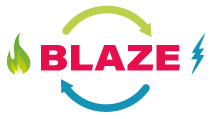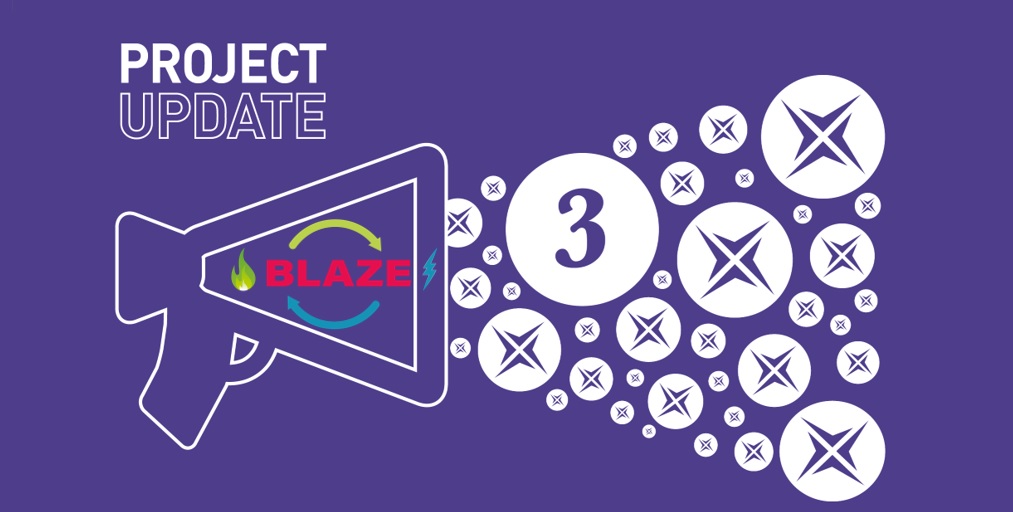The project meeting in Italy last October was the chance to outline and review the progress made by each partner.
The BLAZE partners, gathered in Rotondella (Italy) last October, have presented the progress made with regards to the specific working packages and activities forseen by the project.
Biomass assessment, gasification and conditioning
The goal of the activities within this work package is to identify at least 10 samples and 5 mixtures representative of the most available European biomass species suitable for gasification. The selected biomass will then be tested for usage in the BLAZE gasifier for the bio-syngas production, once proved that it is compatible with solid oxide fuel cells, tar removal and hot gas cleaning and conditioning.
UPDATE: ENEA has completed the tests on the biomass characterization of 13 out of 15 feedstocks selected among the most available European biomass species. Thanks to this work, it will be possible to assess the potential of residual biomass feedstocks, and the related optimal transportation and storage strategies. UNIVAQ made progress with regards to TAR conversion, performing experiments with a microreactor in their lab facilities.
Solid Oxide Fuel Cells (SOFC) Tests
The first aim is to determine the gas quality and purification requirements needed to enable a reliable and correct functioning of the BLAZE gasifier. To ensure such goal, the benchmarking of kinetics, performance and durability of SOFC cells will be carried out, this will grant the optimization of the cells response to the characteristics of the bio-syngas obtained from different types of biomass.
UPDATE: SOLIDpower has made progress relative to the production of Button Cells and Short Stacks, button cells have been delivered to ENEA at end of August. The button cells are single cell anode-supported SOFC cell components manufactured in a similar fashion as the larger cells used within short stacks and full stacks.
Modeling and pilot design
The optimal design and layouts of the BLAZE plants will require a careful assessment, this will ensure the system’s efficiency, and will minimize costs and environmental impact. The conceived layouts will subsequently undergo a complete life cycle assessment in order to better differentiate their environmental impacts and choose the best solution.
UPDATE: The process of techno-economic optimization of the conceptual CHP plant designs has started and is progressing at full speed, the first results will be available soon.
System integration
The objective of this activity is to realize the BLAZE prototype. To do so, it is necessary to acquire and install components for cooling, heating or insulating the gas stream, in addition to valves, sensors and compressor for syngas. This effort will be required to deliver a complete CHP system, comprising of a design book, large stack module and integrated filter candles.
UPDATE: The work has started first focussing on the filtration system, site preparation activities and on the back-pulsing system. Short tests of biomass gasification will then be carried out to validate the reliability of the system once the prototype is ready.
Real Environment performance test
The whole integrated system will be tested in a real industrial environment and monitored for performance, risk and safety analysis.
UPDATE: The work regarding these activities will start soon
Techno-economic, social and environmental assessment
In order to deliver the finest BLAZE prototype, careful assessments will be realized. Such analysis will investigate cost-efficiency, social-economic impacts, environmental impact, health and safety risks, regulatory limitations.
UPDATE: VERTECH has brought forward the work on the following studies: Environmental feasibility (comprising of a life cycle assessment), Economic validation (comprising of a life cycle cost analysis), economic feasibility, Socio-economic repercussions and public perception study. New information has been gathered on the definition of European and local legal and non-legal (environmental and/or social and economic) limitations, i.e. barriers for using BLAZE.
Dissemination Communication and Exploitation
To facilitate and ensure the market uptake of BLAZE innovations, it is essential to deliver a careful market analysis and a robust business model for the commercial innovations. Following these actions, a detailed exploitation plan will be delivered in order to better exploit the project results, this will go hand-in-hand with the dissemination plan which will list the crucial actions for communicating and spreading the project results.
UPDATE: The Project website has been launched, here it is possible to download dissemination material such as the leaflet and the roll up. EUBIA printed out 200 leaflets for a starting dissemination. In addition, a basic PPT presentation has been prepared to be used during public meetings and private presentations.


Recent Comments